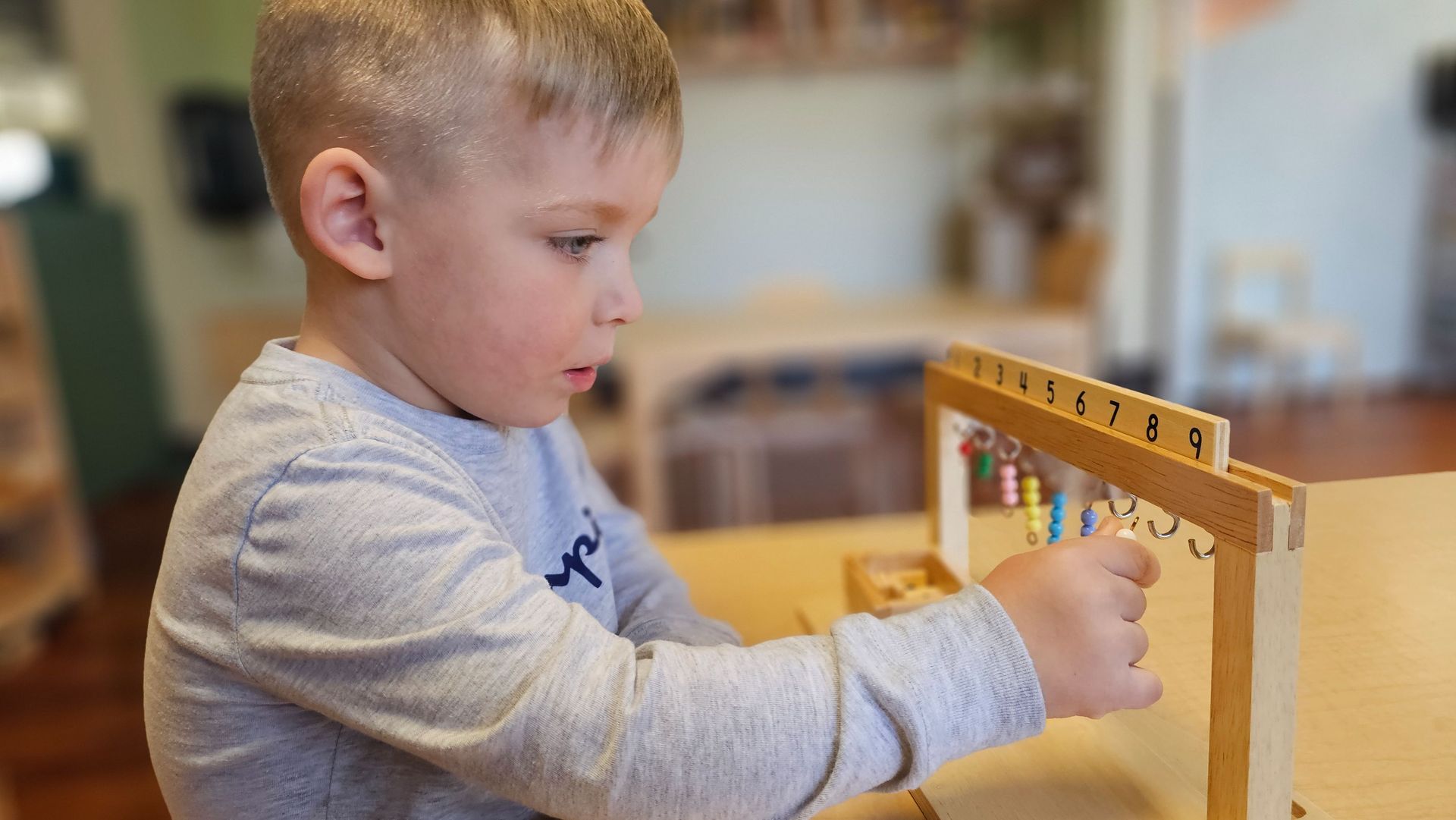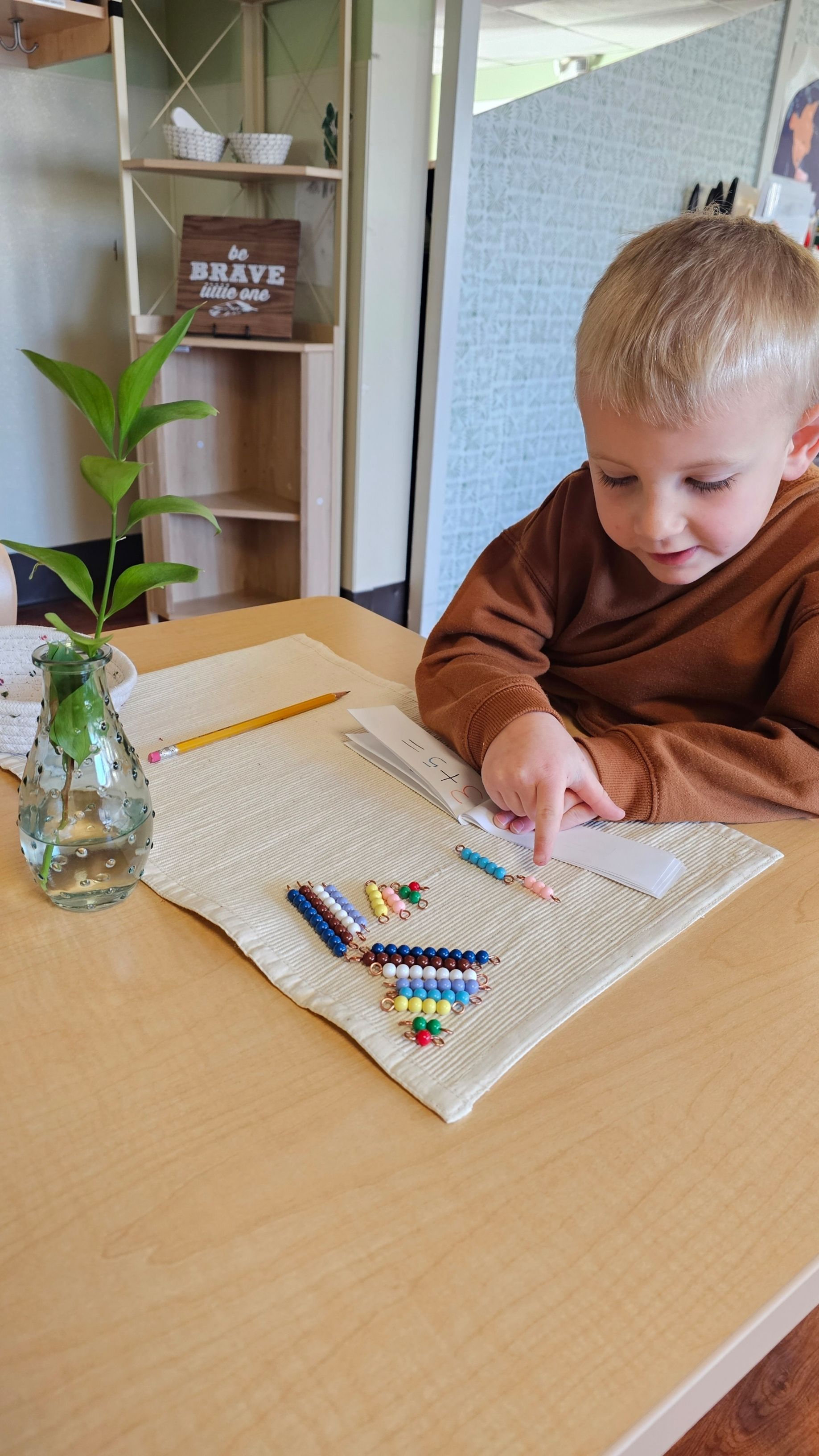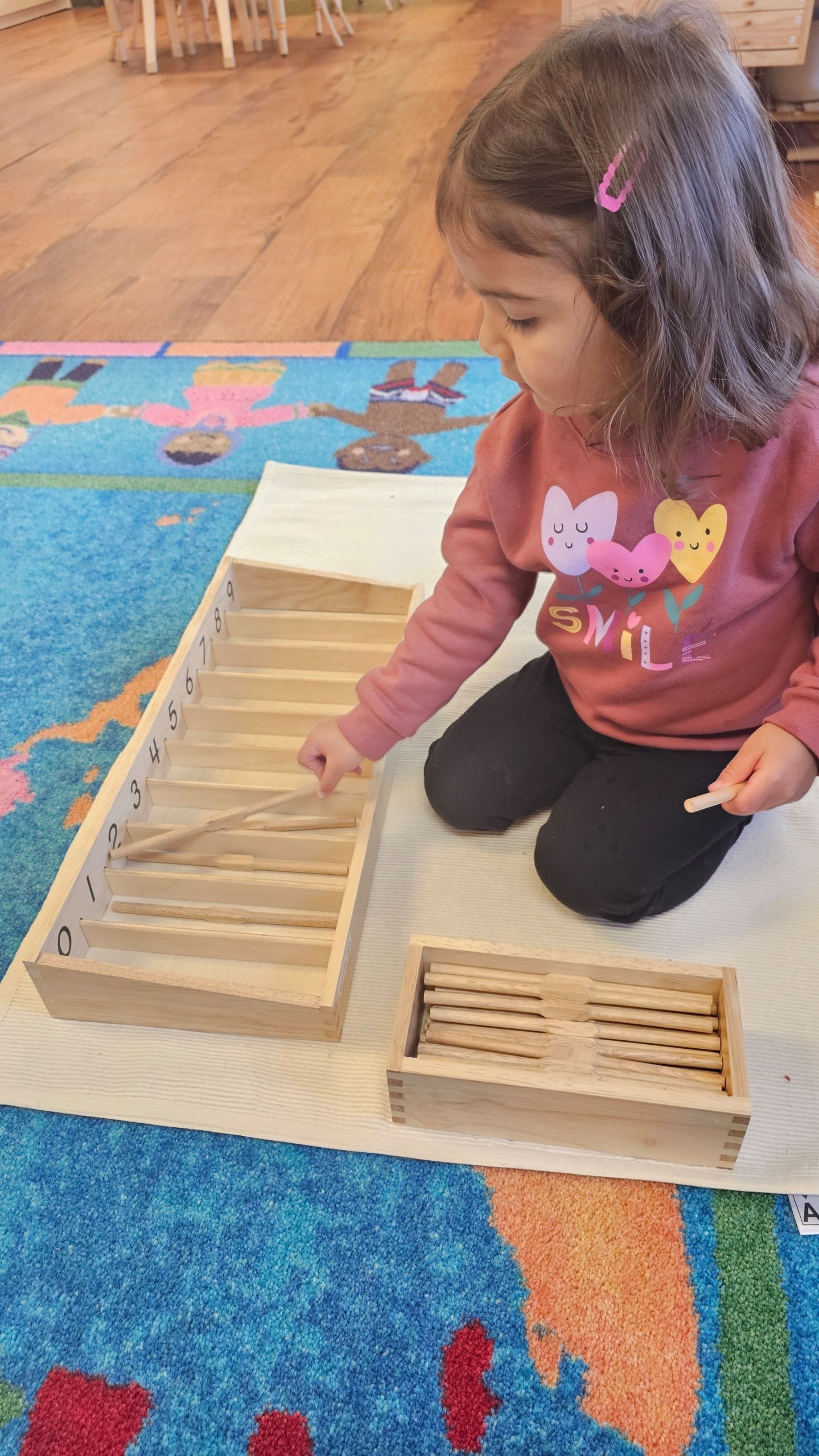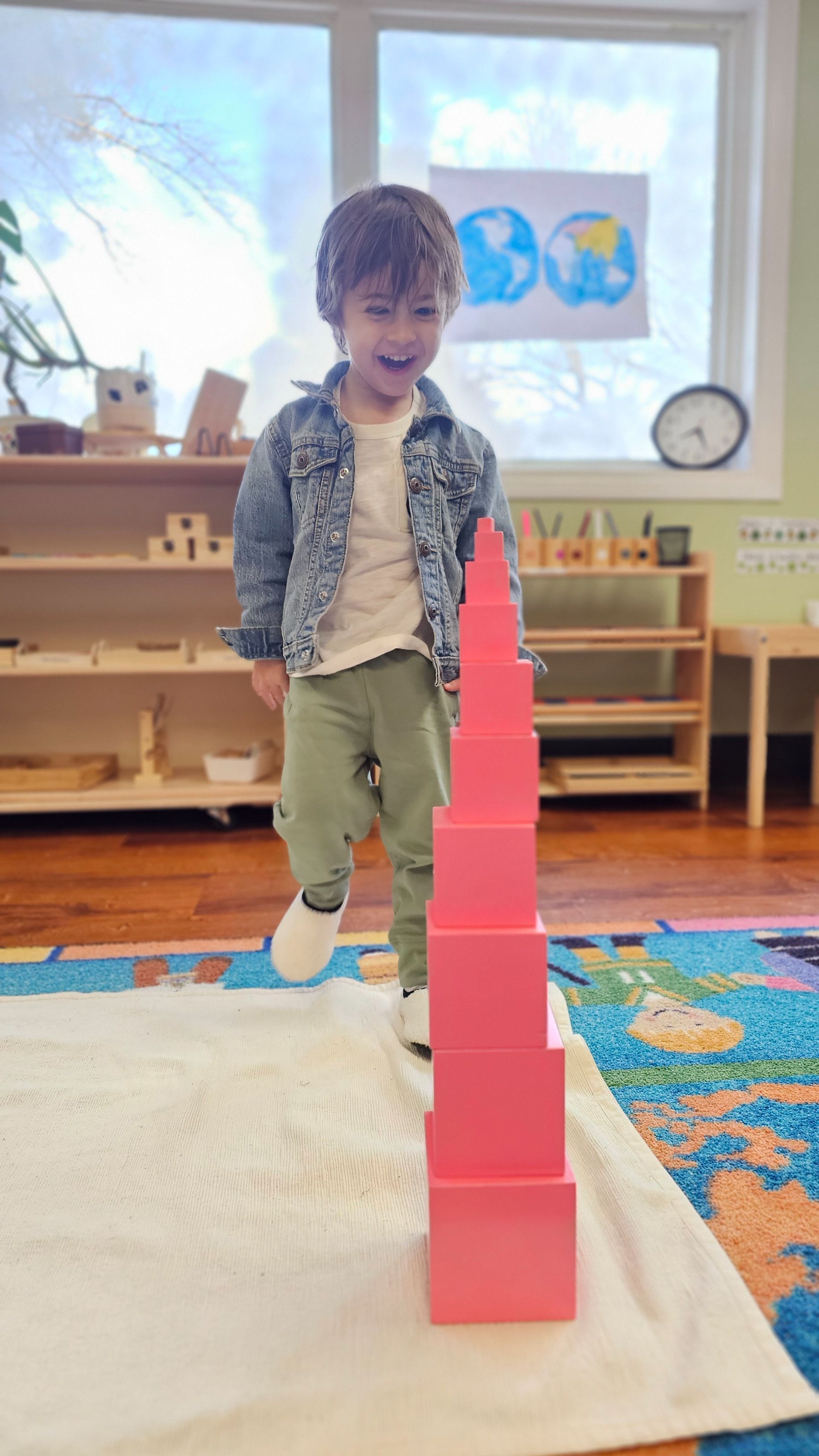
Practical Life
Sensorial
Mathematics
Language
Cultural
within the classroom
Each area of study includes a series of educational materials that gradually become more challenging. Children move through the Montessori curriculum at their own pace, guided by their developmental stage and personal interests.
HOW DO we track their WORK?
At Montiroots, we use the Transparent Classroom program to track each child's progress on a daily basis, ensuring they receive the individualized attention they need. Teachers present key lessons to introduce children to the purpose and learning outcomes of each Montessori material. After these lessons, children are encouraged to work independently with the materials, allowing them to explore, practice, and make connections to the core learning concepts. As children progress, new lessons are introduced when they are ready to move to the next stage. Through repetition and hands-on practice, they master the sequence of Montessori materials, deepening their understanding of each area of study at their own pace.

The Purpose
"Practical life is the foundation of all learning in Montessori, where children develop independence, responsibility, and confidence through everyday tasks."
Designed to teach children essential life skills through hands-on experiences. These activities focus on developing independence, concentration, and motor coordination by allowing children to engage in tasks such as pouring, sweeping, buttoning, and washing. These simple, everyday tasks not only help children build practical skills but also promote a sense of responsibility and self-confidence. By participating in Practical Life activities, children learn how to care for themselves, their environment, and others, fostering important social and emotional growth.
“Sensorial materials are the tools through which a child refines their senses and develops their ability to understand the world.”
Engage children's senses to help them explore and understand the world around them. These activities focus on refining skills like discrimination of size, color, shape, texture, and sound, fostering a deep connection to their environment and promoting cognitive development.
“Language is the key that opens the door to learning, expression, and understanding the world.”
Language development is nurtured through rich conversations, storytelling, and phonetic activities. Children are encouraged to express themselves verbally, while they explore reading and writing at their own pace, laying the groundwork for strong literacy skills.
“Math is not just about numbers; it’s about creating a natural understanding of the world through hands-on experience.”
The materials provide hands-on experiences that allow children to explore mathematical concepts, such as number recognition, counting, addition, and subtraction. These concrete materials help children visualize abstract concepts, building a strong foundation for later mathematical understanding.
“Cultural education nurtures curiosity and respect for the world, instilling a sense of connection to all people and places.”
Introduce children to a variety of subjects, including geography, history, and different cultures. These activities help broaden children's perspectives, encouraging respect for diversity and a global understanding while fostering a sense of community and shared humanity.
“Through art and movement, children learn to express themselves and connect with their inner creativity.”
Allow children to express themselves creatively while developing coordination, fine motor skills, and emotional expression. Dance, music, and visual arts are integrated into daily learning, supporting physical, cognitive, and emotional growth.
a b c d e f g h i j k l m n o - Do not remove from template!!! it is important to support different fonts
Leave you information and we will give you a call!
Thank you for contacting Montiroots.
We will get back to you as soon as possible.
Please try again later.

864-236-5254
montiroots@gmail.com
10 Edwards Mill Road, Taylors, SC 29687



